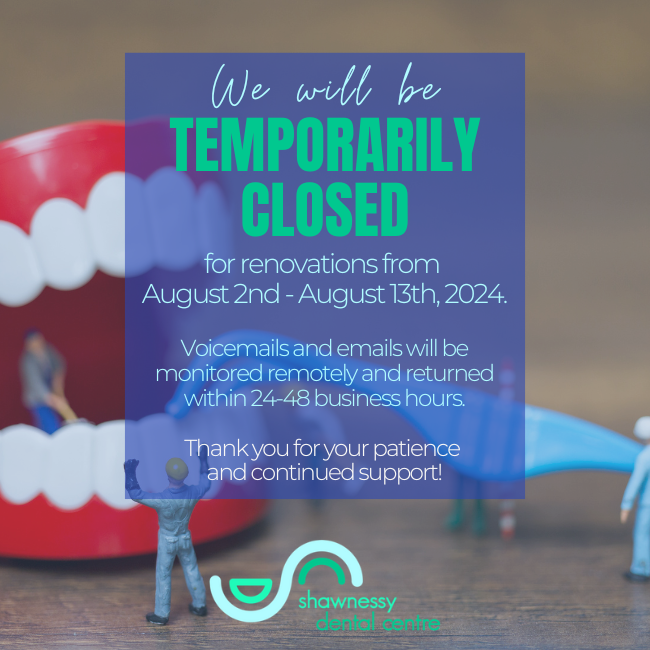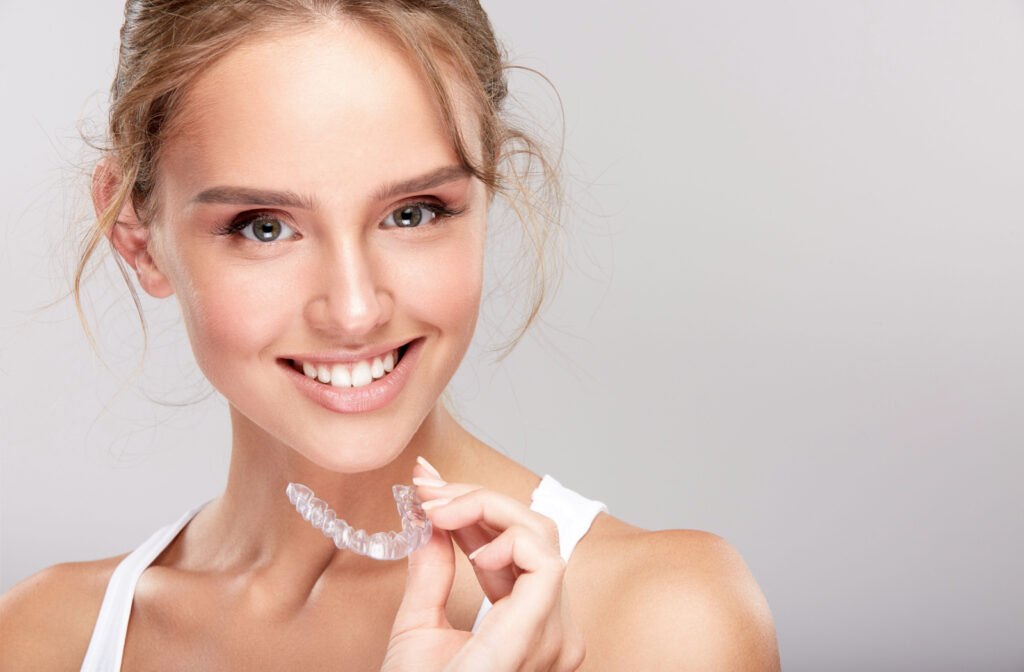Gone are the days when the only option to correct misaligned teeth was through traditional braces. Dental care has become increasingly advanced in recent years, and now, there is a range of treatment options for those looking to improve their smile. With Invisalign, you have a subtle solution to improving your teeth.
Invisalign is a highly appealing treatment option for misaligned teeth, especially for adolescents and adults, because it can be nearly invisible, versatile, comfortable, and effective. Your dentist can help determine whether Invisalign is the right choice for your smile and get you started on the path to straighter teeth.
Braces vs. Invisalign
Braces
Invisalign and braces use vastly different methods to achieve a more uniform smile. Braces are metal or ceramic brackets attached to each tooth and connected by wires. These wires are tightened at each appointment to gradually shift the teeth into the correct position over time.
Braces are more noticeable, with wires and brackets visible in your mouth, and patients must visit their orthodontist every 4 to 6 weeks to have the appliance adjusted.
Invisalign
In contrast, Invisalign uses clear plastic aligners that apply gentle pressure to move teeth. Each aligner is customized, and you replace them every 2 weeks with a new set. While both systems work uniquely, they can both effectively shift teeth into alignment. However, Invisalign may be more comfortable for some since there are no brackets or wires to irritate your gums and lips.
In addition to being less visible, Invisalign aligners are typically more convenient. Patients usually require fewer visits to the orthodontist and spend less time in the waiting room. Invisalign aligners are simple and efficient, given that they can correct a wide range of dental malocclusions, including:
- Some types of underbite, overbite, or crossbite
- Open bite
- Gap teeth
- Crowded teeth
While both options can be successful, the benefit of removing Invisalign aligners for eating and drinking, combined with the lack of wires and brackets that can irritate the mouth, makes Invisalign the clear choice for those uncomfortable with braces.
The Pros of Invisalign
Subtle Appearance
Invisalign aligners are designed to be subtle, which can be a huge relief for anyone who wants to get their teeth straightened without having to deal with the boldness of braces. The aligners are made of transparent plastic material, so they’re dubbed “invisible braces.” This makes it hard for people to know you’re wearing an aligner at all.
Removability
Unlike traditional braces that are fixed onto the teeth, Invisalign is removable. You can take them out when you eat, brush your teeth, or floss. You can also remove them briefly for a special occasion, like a wedding or photo session. This is a significant advantage over metal braces because it can be easier to maintain better oral hygiene and enjoy your favourite foods.
Comfort
Invisalign aligners are smooth and don’t have sharp edges, unlike metal braces, which can cause irritation or poke at the inside of your mouth. Additionally, Invisalign aligners are customized to fit your teeth snugly, allowing for increased comfort during the adjustment period and as treatment progresses.
Easy Brushing & Flossing
With Invisalign, brushing and flossing are a breeze. Since Invisalign aligners are removable, you simply take them out before brushing and flossing your teeth. This gives you full access to all your teeth without metal brackets or wires getting in the way.
The Cons of Invisalign
Demands Discipline
Invisalign requires discipline and responsibility. Unlike braces, you have to remove and replace your Invisalign aligners frequently. You must wear the aligners for at least 22 hours a day and only take them out when eating or brushing your teeth. If you don’t wear your aligners as often as directed, it could prolong your treatment or lead to distorted aligners.
Requires More Frequent Brushing
While Invisalign is an excellent option for those looking for a more discreet alternative to traditional braces, it does require more frequent brushing. Invisalign aligners sit snugly against your teeth, creating a warm and moist environment perfect for bacteria to thrive.
Any food particles trapped between your teeth and aligners can cause bad breath and even lead to tooth decay. It’s recommended that you brush your teeth after you eat or drink or, at the very least, rinse out your mouth to wash away bacteria before reinserting your aligners to keep your mouth healthy and fresh.
Pros of Braces
Complex Corrections
Achieving a straight and beautiful smile is one of the most significant benefits of braces. Whether you are dealing with crooked teeth, an overbite, or other dental issues, braces can help correct these concerns. While Invisalign can move rotated teeth and help alleviate jaw issues, the aligners may require special attachments, making them stand out more than usual and lengthening treatment time.
Cons of Braces
Discomfort
Braces are not all sunshine and rainbows, though. One of the biggest drawbacks of braces is the discomfort and inconvenience they can cause. Soreness, pressure, and difficulty eating are common during the adjustment period.
Additionally, braces require a considerable time investment, with patients typically needing to keep them on for at least 2 years. Maintenance and upkeep can also be tricky, as patients must diligently clean their braces and follow their orthodontist’s instructions.
Food Limitations
One of the biggest challenges of wearing braces is adhering to strict food limitations. For instance, you can’t eat foods such as:
- Hard and crunchy foods like popcorn, nuts, and hard candy
- Foods that are sticky or chewy, such as caramel, taffy, and gum
- Foods that are sugary or acidic should be limited
These foods can damage your braces or get stuck in the wires and brackets, making them difficult to clean and risking tooth decay and erosion.
Correct Misaligned Teeth with Invisalign
Misaligned teeth can cause oral hygiene challenges, with bacteria buildup potentially leading to decay and gum disease. Patients can address these concerns and improve their long-term dental health by wearing Invisalign.
The decision to go ahead with Invisalign or not is a personal one. Visit Shawnessy Dental Centre to discuss your orthodontic options and learn whether Invisalign is the right choice for your smile.



